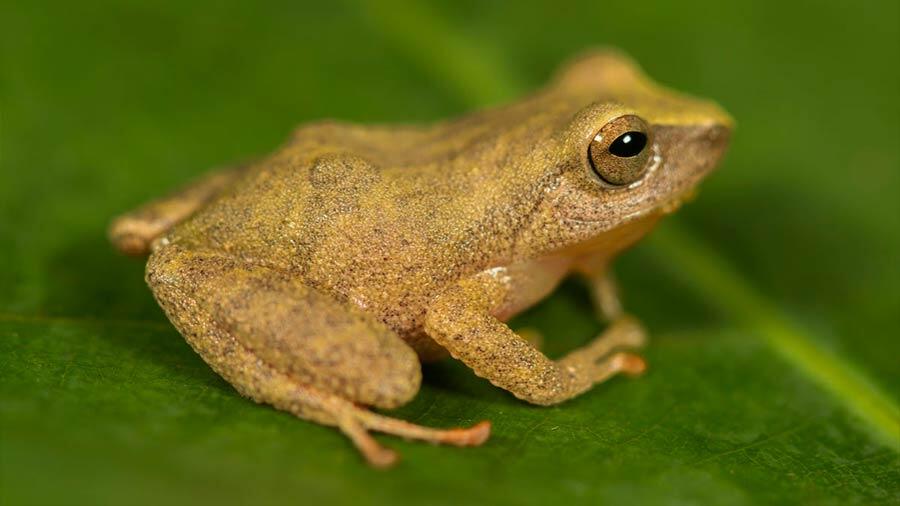In a remote corner of the Peruvian central Andes a group of scientists has just discovered a new species of frog which have a name fairytale “rain frog Sleeping Beauty”.
The Pristimantis pulchridormientes saw for the first time in November 2014, a night in which a group of scientists who was doing fieldwork in Tingo Maria National Park, about 500 km northeast of Lima, heard strange chants they could not identify.
“There were about 15 males singing. We captured some and saw that they had red legs. We said, ‘Ah, yes, this must be a new species,’ because we had never seen frogs like that, “says Germán Chávez, who works for the Center for Ornithology and Biodiversity (CORBIDI) in Lima.
Pristimantis 131 species of the family in Peru are known, but P. pulchridormientes out because it has the English, the back of the thighs and tibia bright red. So they have described Chavez and his colleague Alessandro Catenazzi, Department of Zoology of Southern Illinois University, in a study published in August in the journal ZooKeys.
The Sleeping Beauty called after the name of the mountain range in which it was found, and, according to locals, has the shape of a young woman lying on her side.
Scientists do not know why this frog has red legs, but Chavez speculates that could be a defensive and not a reproductive trait, since males make use of songs to seduce females.
“Generally, in the rainy season and reproductive behaviors arise is when the edges occur. We may have not reached the most intense moment of reproduction, when females begin to leave, “says this specialist in reptiles and amphibians researcher.
Sleeping Beauty, a rugged mountain range in the region of Huanuco, it was until recently a place forbidden to scientists because it was considered too dangerous.
“Importantly, this national park had never done scientific research, or a list of species … for political and social reasons, issues that have to do with terrorism and drug trafficking, he could not organize a expedition to the area without fear that you steal equipment or cameras, “says Chavez.
However, because security has improved, it is likely that scientists find new species in this region. In fact, during the field work they did in 2014, Chavez and his team identified some unusual specimens of amphibians and reptiles.
“We have four or five species in which we are working to see whether or not new species. We are very happy because although everything was very quick, we took everything that was available to us, on the floor and our height, but there is still a lot to explore there, “he concludes.











